THE FLOREY
Annual Report 2020



On behalf of the Board of the Florey Institute of Neuroscience and Mental Health, it is my pleasure to welcome you to the Florey’s 2020 Annual Report.

During a year like no other, where the world has grappled with the unprecedented events caused by the COVID-19 pandemic, I am immensely proud to inform you that everyone at the Florey has persisted and overcome these significant challenges. As you’ll read in the report, many of our talented researchers applied their considerable skills and expertise to the crisis itself, contributing to the global scientific understanding of the virus, and options for diagnosis and treatment.
Like the majority of other workplaces in Australia and overseas, the Florey faced considerable disruption in 2020. In recognition of the importance of the Florey’s work in finding ways to treat and cure diseases of the brain and mind, we were provided special exempt status by the Victorian State Government during times of restriction, which meant that laboratory research continued uninterrupted throughout the year. We were also fortunate to receive financial support from the Australian Federal Government in a number of ways. We are also extraordinarily grateful to our philanthropic partners, trusts and foundations, and valued donors who generously continued their support of our work. The combination of these factors meant, both financially and in terms of productivity, the Florey weathered this challenging year with as much stability as the circumstances allowed.
Thank you to our Board Members
Mr Mark Jones AM, Chair
Prof. Steven Petrou, Director
Mr Harold Mitchell AC (Chair, Retired Dec 20)
Dr Maxwell Alexander (Retired Jun 20)
Ms Lyndsey Cattermole AM
Mr Peter Haig (Appointed Oct 20)
Mr Adam Horsburgh (Appointed Sep 20)
Prof. Mark Hargreaves
Prof. Andrea Hull AO
For this and many other reasons, I would like to acknowledge Mr Harold Mitchell AC, who retired as Chair of the Florey’s Board in December 2020. On behalf of the Board and all at the Florey, we thank him for his outstanding service to the Institute and look forward to his continuing support as a special friend of the Florey. I would also like to thank and acknowledge all of my fellow Board members and the Management Team for their diligence, counsel and commitment. We have commenced a process of refreshing the Board as some Board members near the end of their terms to replace these exceptional individuals with new members who will bring new skills and perspectives to guide the Institute over the coming years.
On a final note, my long association with the Florey as a supporter, then Board member and now Chair has been enormously gratifying. There is no doubt in my mind that the Florey is making a difference to the lives of those living with brain diseases or disorders. I thank you for your interest in, and support of the Florey, and for joining us in our mission to solve the greatest brain and mind challenges of our era.
Mr Mark Jones AM Chair, Florey Institute of Neuroscience and Mental HealthMs Kate Joel (Appointed Oct 20)
Prof. Shitij Kapur
Prof. Christine Kilpatrick AO
Mr Ross Oakley OAM
Mr Stephen Spargo AM.
Our sites
30 Royal Pde, Parkville, VIC 3052.
T +61 3 9035 3000 ABN: 92 124 762 027
155 Oak St, Parkville, VIC 3052. Howard Florey laboratories, Gate 11, Royal Pde, Parkville VIC 3052. 245 Burgundy St, Heidelberg VIC 3084. T +61 3 9035 7000
In 2020, the COVID-19 pandemic forced us to collectively set aside our existing plans and adapt to this public health crisis. Despite these challenges, I am very proud to inform you that the Florey not only navigated the situation but our staff and students pulled together and excelled.
In this year’s annual report, you’ll read about how we found new and innovative ways of working together to continue our important research. The report features highlights from the critical work the Florey performs across more than 18 diseases and disorders including dementia, stroke, epilepsy and mental health, as well as discovery science which provides us with an understanding of the brain and its mechanisms. You’ll also read about how our scientists turned their expertise to the COVID-19 threat and how their work provided two worldleading projects and made media headlines.
Our successes in this challenging year were achieved because of the extraordinary dedication of our staff and students. I would like to take this opportunity to thank our operational and support service teams who, despite some of the strictest restrictions on movement in the world, continued to maintain the infrastructure and services which enable our scientific discoveries.
I would also like to acknowledge and thank our researchers and students who remained focused on the importance of the work that we do and persisted in their goals to understand, prevent and cure diseases of the brain. My sincere thanks also go to the Florey’s board members who provided exceptional guidance and support throughout the year.
When I reflect on 2020 in years to come, I suspect that an enduring memory for me will be the many webinars that we provided to maintain the connections and motivation of our staff and students. Throughout these discussions, we continually returned to the theme of the generous support and encouragement that we receive from our donors, our partners and the Federal and State Governments. On behalf of all at the Florey, please accept our gratitude for being part of our advances in brain and mind science.
Professor Steven Petrou PhD FAHMS Director, Florey Institute of Neuroscience and Mental Health
Our cover photo
Stem cells present a novel way forward for repairing the injured brain. Our researchers are advancing stem cell-based therapies for neurodegenerative conditions like Parkinson’s by investigating how stem cell-derived dopamine neurons can functionally replace lost dopamine when transplanted into the brain.
The cover shows a brain graft containing dopamine neurons (green) grown from human pluripotent stem cells. Different types of dopamine neurons embedded in the graft and growing into the surrounding area are represented (red and blue). Image credit: Neurogenesis & Neural Transplantation lab and Stem Cells & Neural Developmental lab.
globe-asia florey.edu.au
facebook-square facebook.com/TheFlorey
twitter-square twitter.com/TheFlorey
instagram-square instagram.com/TheFlorey
youtube-square The Florey Institute of Neuroscience and Mental Health
linkedin The Florey Institute of Neuroscience and Mental Health
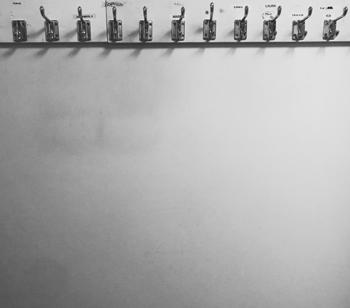
We found new ways to connect and continue supporting each other. When stroke researcher Dr Ruby Lipson-Smith, then PhD Candidate, submitted her thesis in May 2020, her team was there to celebrate virtually with her.
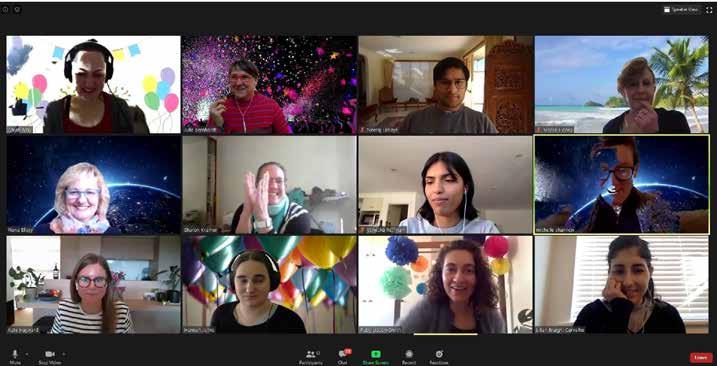
Some parts inside the Florey also looked a bit different as our research staff and students found novel ways to collaborate and continue their important work.
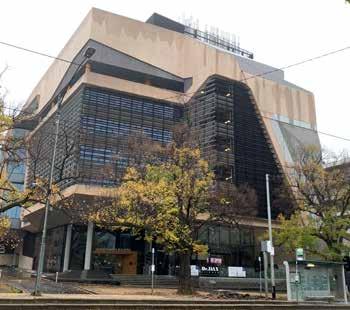
The Florey’s research and innovations in discovery and clinical neuroscience translate to public value outcomes. Our research outcomes and discoveries will enrich people’s lives and influence the future in positive and meaningful ways. The Florey believes that true innovation brings together information, expertise and methods to create something new.
In 2020, the Florey was a global leader in increasing scientific understanding and investigating new means to prevent and treat diseases and disorders of the brain and mind. We made discoveries that are cutting edge, relevant and enduring. We also made a significant impact on local and global populations through our COVID-19 research. Importantly, we were a trusted source of scientific information, sharing the outcomes of our work and building knowledge within scientific communities and society.
Over 12,000 people signed up to read about state-of-the-art Florey research and donor news in our regular Brain Matters magazine.
were published by Florey researchers.
were provided to help Florey researchers who were impacted disproportionately during COVID-19 restrictions to rebound.
Florey researchers contributed to the scientific body of knowledge around the Neurological Impacts of the COVID-19 virus, making strides in drug discovery, treatment options and clinical research
We were a trusted media source for scientific expertise, with Florey research making Headlines in 41 Countries.
Dr Sarah Gordon who received the inaugural Florey Fellowship in recognition of her excellent research track record, including Baker-Gordon syndrome named in honour of her pioneering research and the demonstrable national scale of her advocacy for scientists who identify as LGBTQIA+.

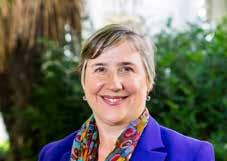
Associate Professor Lachlan Thompson and Professor Clare Parish who shared in a multi-institute $12.5million grant awarded by the Aligning Science Across Parkinson’s (ASAP) initiative and The Michael J. Fox Foundation to advance research into the genetic basis of Parkinson’s Disease.
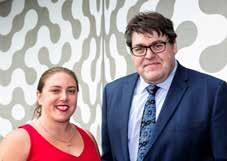
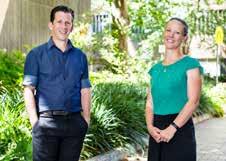
All Florey researchers who were awarded grants from NHMRC, MRFF, ARC, NIH and other grant bodies in 2020. The Florey extends our gratitude to the Australian and Victorian government for their continued support of the Florey’s research.
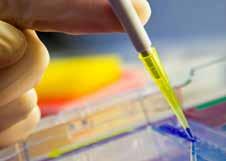
Professor Julie Bernhardt AM elected as a Fellow of the Australian Academy of Health and Medical Sciences in recognition of her outstanding contribution to the health and medical research landscape in Australia.
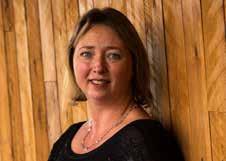
Professor Malcolm Horne, Dr David Szmulewicz and project team who received funding from MTPConnect’s Biomedical Translation Bridge program and Friedreich Ataxia Research Alliance to develop a prototype device to measure ataxia.
Professor Graeme Jackson who received the prestigious 53rd Lombroso Lecturer Award from the American Epilepsy Society in global recognition of his outstanding research in epilepsy.
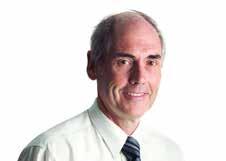
Dr Jennifer Hollands, 2020 Stem Ambassador, who partnered with Ged Kearney MP to foster new relationships between science and government.
Professor Andrew Lawrence on his appointment as Junior Vice President on the World Health Organisation affiliated International Society for Biomedical Research on Alcoholism (ISBRA).
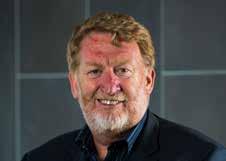
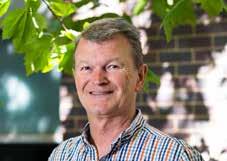

As you’re reading this sentence, cells in your brain known as neurons are rapidly transmitting information along specialised structures called axons that enable two-way communication with your muscles, organs and glands. Individual neurons are also rapidly communicating with their neighbouring neuron, and together these processes are responsible for controlling our movement, thinking and emotions.
Unraveling how these individual nerve ‘circuits’ work together in the brain to do this is a major goal in neuroscience, with neuroscientists using techniques that selectively regulate individual neurons to do this. Common techniques include using light or designer drugs, yet neither of these approaches provide information about the neuronal connections that are responsible for controlling the neuron’s activity.
Enter Professor Ross Bathgate from the Florey and Professor Andrew Allen from the University of Melbourne.
The duo led a team of researchers who developed and validated a new technique that is revealing new information about the brain.
“The technique takes the established method of using designer drugs, known as chemogenetics, one step further,” explains Professor Bathgate.
“We used a system that allows a specially designed virus to deliver a designer neuropeptide called allatostatin into a specific cell group while the receptor for allatostatin is delivered in a virus to another cell group. This allows us to understand which neural circuits are involved in turning on neurons as when the peptide and receptor are joined the neuron is switched off.”
This sounds deceptively simple, but has been proven to work for the first time and used to map a neural circuit that controls blood pressure. Most importantly, the researchers have developed a method that can be used to map all the neural circuitry that is connecting cell groups, and most importantly to understand how those circuits are working to control particular behaviours.
Director of the Florey Professor Steven Petrou says the approach is what’s known in science as a ‘forever paper’ as it builds a foundation for others investigating the brain.
“New techniques in neuroscience allow researchers to unlock new information about health and disease states. The way the scientific community is picking up this technique and applying it to different areas means that I have no doubt that the work done by Ross, Andrew and their teams will be contributing to new discoveries for many years into the future.”

“This approach may unlock questions that still puzzle neuroscientists, such as what causes a cell group to become active during a particular behaviour or disease state?”Red staining in a cross section of the brainstem shows the allatostatin neuropeptide binding to its green-stained receptors, marking success of the technique’s special viral delivery system. Professor Ross Bathgate
A dedicated team of scientists at the Florey have been pioneering new approaches to diagnose and treat Parkinson’s disease. Professor Kevin Barnham and Dr Leah Beauchamp are among the researchers involved in ground-breaking efforts and new investigations throughout the year. According to Professor Barnham shifting the way we think about and approach the disease is essential to tackling Parkinson’s.

“A diagnosis of Parkinson’s disease in the clinical setting currently relies on the person presenting with movement dysfunction, but research shows that 50-70% of dopamine cell loss in the brain has already occurred by this time. Waiting until this stage to diagnose and treat Parkinson’s disease means you’ve probably already missed the window for neuroprotective therapies to have their intended effect,” explained Professor Barnham.
He continued, “I liken the manifestation of Parkinson’s to a bomb with a really long fuse which we think is about ten to twenty years long and by the time we see people present in the clinic the bomb has already exploded. While excellent treatments are available to manage symptoms, our work is trying to understand the fuse and what can be done to disarm it well ahead of time.”
“Parkinson’s may have once been thought of as a disease of old age, but what we’re now starting to realise is that it’s more likely starting in middle-age.”
The research group believe olfaction changes could be amid signs that the fuse is lit.
“Loss of smell or reduced smell is a symptom that presents in around 90% of people in the early stages of Parkinson’s disease and about a decade ahead of motor symptoms. We believe this symptom could present a new way forward in detecting someone’s risk of developing Parkinson’s disease much early then what happens currently,” said Dr Leah Beauchamp.
The team, which also includes Professor David Finkelstein and Professor Ashley Bush and their clinical collaborator and neurologist, Dr Andrew Evans, have been considering new measures to be able to diagnose Parkinson’s easier and earlier.
Among these is a simple, cost-effective screening protocol which they hope can be used to identify people in the community at risk of developing Parkinson’s, or who are in early stages of the disease, at a time when therapies have the greatest potential to prevent disease progression and onset of movement dysfunction.
Recently, Florey researchers published critical new findings suggesting that that people with REM sleep behaviour disorder have prodromal, or early-stage, Parkinson’s disease.
The team believe that this cohort represents an ideal group of people to participate in clinical trials of neuroprotective therapies as they have a higher predisposition to go on to develop the disease, but don’t have the same level of dopamine cell loss in the brain as people in later stages of Parkinson’s. Put simply, neuroprotective therapies, including the two treatments developed by Florey researchers under clinical investigation, may be able to better deliver their intended effects to this cohort.
Professor Barnham reflects on the way forward.
“I’m reminded of NASA and what is seen as one of the greatest achievements of the twentieth century. There was no scientific impediment stopping NASA going to the moon. They got there because they decided to go. It’s as simple as that. We can prevent Parkinson’s disease if as a society we decide to make that commitment.”
When reports of loss of smell in people infected with coronavirus started surfacing in early 2020, it set off red flags for the Florey’s Parkinson’s researchers. They began investigating the scope of neurological symptoms associated with the virus and were among the first in the world to publish a review paper warning of the possible long-term neurological consequences of COVID-19.
“We found that neurological symptoms being reported ranged from rare, such as lack of oxygen to the brain known as brain hypoxia, to more common symptoms such as loss of smell which was on average reported in three out of four people infected with the SARSCoV-2 virus,” said Dr Beauchamp.
“While on the surface loss of smell or reduced smell can appear as little cause for concern, it actually tells us that acutely there is inflammation occurring in the olfactory system,” she explained.
Inflammation is considered to play a major role in the pathogenesis of neurogenerative disease. It has been particularly well studied in Parkinson’s, among a mosaic of genetic and environmental factors understood to increase one’s risk of developing the disease.
Research now suggests that in the years following the last global viral pandemic, the Spanish Flu in 1918, the risk of developing Parkinson’s disease increased two to three-fold worldwide.
“We should take this insight from the Spanish Flu and take action to prevent a neurological wave of diseases that could possibly unfold down track as a result of the coronavirus”, said Professor Barnham.
“It is incredibly concerning to think that the incidence of Parkinson's disease is already set to double in the next 20 years with no diseasemodifying treatments available, before even considering potential effects of COVID-19,” he said.


“The world was caught off guard the first-time, but it doesn’t need to be again. We now know what needs to be done. Alongside a strategised public health approach, tools for early diagnosis and better treatments are key.”Prof Barnham and Dr Beauchamp are among a team who believe smell presents a way forward in diagnosing Parkinson’s early. The team have identified that people with REM sleep behaviour disorder may be ideally suited to trialling neuroprotective therapies.
Throughout 2020, the team at the Australian Epilepsy Project have been hard at work developing their plans to bring life-changing technologies to all Australians living with epilepsy through a nationwide network of community hubs.

Led by Professor Graeme Jackson, the team are pleased to share one story which has motivated them in their goals for the project: fewer deaths, fewer seizures and better quality of life for people living with epilepsy.
Amanda Anderson was 23 years old and out to lunch with friends when someone first noticed a sudden change in her demeanour, like she’d 'spaced out’ for a few seconds. She must have been daydreaming, they supposed. Then it happened again. Amanda had no explanation and no recall of what had happened.
When colleagues reported noticing her in similar ‘dream-like’ states, she was referred for an Electroencephalogram (EEG) to assess her brain’s electrical activity.
Amanda was shocked to discover that these momentary lapses of consciousness - known as focal seizures - were a result of electrical disturbances in localised networks in one side of her brain and a core symptom of epilepsy.
As in one third of cases, medication did not prove successful for Amanda. Despite her seizures becoming more severe, the cause couldn’t be identified.
“By this stage I had to give up my university studies because I couldn’t remember a lot of what I was learning. I couldn’t drive. I was experiencing mood swings and anger that I found hard to control as well as crushing fatigue. I had double vision for hours at a time and sometimes urinary incontinence. It was debilitating,” says Amanda.
“For most patients with epilepsy, this uncertainty in diagnosis and treatment is currently an unfortunate reality. Too often diagnosis and treatment are based on guesswork,” says Professor Graeme Jackson, Chief Investigator of the Australian Epilepsy Project.
It took referral to Professor Berkovic, Director, Epilepsy Research Centre at Austin Health, for Amanda to find hope that things could be better. Neurologists had discovered scar tissue on her right temporal lobe which Prof Berkovic agreed was likely the cause of her epilepsy. She was considered a good candidate for surgery to resect this lesion in the hope it could significantly reduce her seizures.
Seven years after she first began experiencing seizures, Amanda had a Right Anterior Temporal Lobectomy. Her seizures stopped – immediately.
“The freedom was fantastic; I had a newfound sense of control over my life. My son didn’t have to miss out on parties or playgroup anymore – I could go to these things confidently and independently, without fear of suffering a seizure.”
In early 2021, the Australian Epilepsy Project was awarded $30 million from the Australian Government’s Medical Research Future Fund, being the single largest government investment made to epilepsy research in Australia.
Amanda has since completed a degree in psychology, is a proud mum of two and now enjoys the stimulation and challenge of working life once again, this time for the Australian Epilepsy Project as a Lived Experience Advocate.
“The epilepsy team changed my life after years of uncertainty, trial and error, stress and fatigue.”
“Everyone living with the debilitating effects of epilepsy should have access to this world-leading care.”Professor Graeme Jackson and Amanda Anderson
The Australian Stroke Clinical Registry (AuSCR) is a national effort to deliver best practice care for people who experience stroke. The registry recently marked dual milestones celebrating 10 years of operation and 100,000 recorded cases of stroke care.
The registry collects key information about care given to someone experiencing stroke, with volunteers contributing data which covers their journey from first presentation at hospital, right through to their health outcomes 3-6 months down track.
Real-time monitoring allows the 74 Australian hospital actively using the registry to improve treatment processes, as well as benchmark how their care and patient outcomes compare to other hospitals and share information between clinicians.
AuSCR is a partnership between the Florey, The George Institute, Stroke Foundation and the Stroke Society of Australasia.
The Florey’s Professor Dominique Cadilhac, data custodian of the registry, says the evidence is clear that initiatives like AuSCR work.
“Providing the best standard of care to patients hospitalised after stroke is known to lead to better outcomes. This can mean decreased disability, reducing the risk of recurrent stroke and even preventing deaths,” said Professor Cadilhac.
“We continuously see improved stroke care in the hospitals that take insights from the registry and implement evidence-informed changes for their patients.”
In addition to upholding clinical care standards, the registry’s data is also used in vital stroke research, including studies at the Florey to better understand the long-term effects of stroke, prevention management and opportunities to improve stroke care in hospitals and the community.
In a step closer to understanding stroke in children, the Australian Stroke Clinical Registry extended its vital collection of stroke care and treatment data in 2020 to include paediatric stroke episodes.
Working with The Royal Children's Hospital in Melbourne, the newly developed paediatric dataset will form an integral source of information for paediatric stroke studies, such as the national Paediatric Acute Code Stroke (PACS) study funded by the Australian Government’s Medical Research Future Fund.
Additionally, the registry will guide best standards of hospital care ultimately aiming to reduce paediatric deaths, disability and recurrent stroke in children.
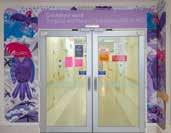


In 2020, the Australian Stroke Clinical Registry proved a valuable tool in capturing COVID-19’s impacts on stroke care and hospital resources in Australia.
Data collected from 54 hospitals painted a picture of affected stroke services as cases of COVID-19 in Australia grew, with a quarter of hospitals reporting stroke units being temporarily reduced in size or moved and specialist staff deployed to other duties. The data also showed fewer presentations for suspected episodes of stroke to hospital during this time, particularly in cases of mild stroke or transient symptoms.
Professor Cadilhac urged people to be vigilant about seeking medical care for stroke. “If you or someone else experiences signs of stroke, don’t let anything stop you from going to hospital. Early intervention goes hand-in-hand with better outcomes so call 000 immediately," she said.
A specially formulated ‘mega-dose’ of vitamin C, developed by Professor Clive May, Dr Yugeesh Lankadeva and teams, is showing great promise in treating sepsis, a life-threatening response to infection that can lead to multi-organ failure and death. Sepsis is the main cause of death in intensive care units worldwide and responsible for 11 million deaths each year, yet no treatments are available to reverse its effects. Here we outline the research journey behind this treatment.
Professor May has been involved in sepsis research for the past 18 years. After developing a technique to continuously monitor kidney blood flow and oxygen levels within organs, his team made a key discovery: Oxygen levels dropped to damagecausing levels in the kidney in the early stages of sepsis, and similar effects were later found to occur in the brain.
More than a decade later, Dr Lankadeva joined Prof May’s laboratory, bringing expertise in renal physiology. The team continued to focus on treating acute kidney injury caused by sepsis, which occurs in up to half of people with sepsis and increases risk of death. Prof May and Dr Lankadeva set out to find a treatment that could potentially combat the chemical imbalance caused by low oxygen in these organs.
Vitamin C - a natural antioxidant with anti-inflammatory and anticoagulant properties - was investigated by the team. They knew that vitamin C levels in blood dropped during sepsis and vitamin C had been used successfully in cancer and burn treatments meaning it was safe for human trials. But they believed a much higher dose was needed to combat sepsis and worked over the next few years to develop a treatment protocol for a specially formulated vitamin C ‘mega-dose’.
In early 2020, Prof May and Dr Lankadeva began trialling the ‘mega dose’ protocol in a large animal study. Shortly after receiving treatment, the animals showed significant improvements in organ functions, body temperature, and physical signs that suggested a complete reversal of sepsis. Prof May recalls it was one of the most amazing moment in his career. Director of Intensive Care Research at Austin Health, Prof Rinaldo Bellomo, rushed over to observe the procedure and again they witnessed the same remarkable results.



Soon after, the team became aware of growing reports of multi-organ failure in patients infected with COVID-19. With the newly developed treatment regime showing impressive results, the team quickly began investigating whether it could be applied in treatment of critically-ill patients with COVID-19.

The team accelerated a protocol of treatment for use in humans and in April 2020 the regime was approved to compassionately treat a critically ill COVID-19 patient who was in the Intensive Care Unit at Austin Health in Melbourne. Once again, the regime led to rapid improvement in the patient’s health. The patient was taken off machine ventilation and discharged from hospital without complications 22 days later.
• Sepsis accounts for 20% of all global deaths.
• Sepsis causes at least 6000 Australia deaths per year.
• Sepsis kills twice as many Australians as prostate or breast cancer.
• The ‘mega dose’ treatment outlined in this story is specially formulated and only intended for use in intensive care settings under strict observation by a clinician.


Together the research and case study informed a pilot clinical trial at Austin Health to investigate the safety and efficacy of the vitamin C regime for intensive care patients experiencing septic shock. Additional hospitals are set to join the trial in 2021. It is hoped the treatment can one day be available in intensive care units around the world as a new treatment option for critically ill patients.
As the trial continues, Prof May and Dr Lankadeva will continue their important work at the Florey with clinical collaborators. In the trial, blood samples and other health information will be collected to assess the impact on patients during and after treatment with either the vitamin C treatment or placebo. Watch this exciting research space!
HOW MUCH IS STILL UNKNOWN ABOUT THE BRAIN? WHAT DOES IT FEEL LIKE TO HAVE A DISORDER NAMED AFTER YOU? WHAT CAUSES OUR BRAIN TO AGE? WHY HAVE CERTAIN DISEASES BEEN STIGMATISED IN THE PAST? HOW CAN OUR ENVIRONMENT AFFECT FUTURE GENERATIONS? WHAT ROLE DOES SMELL PLAY IN NEURODEGENERATIVE DISEASES? WHAT DRIVES BRAIN BEHAVIOUR ON A CHEMICAL LEVEL? WHY DO DEMENTIAS REMAIN SUCH A CHALLENGE TO TREAT? HOW CAN STRESS AND ANXIETY INDUCE ALCOHOL SEEKING?
In 2020, the Florey and ABC Radio Adelaide partnered to unravel the complexities of the brain and mind in a monthly radio segment called Brain Power. From sharing discoveries of new diseases and treatments, to how their research helped informed ways to consider issues of the day, Brain Power opened new ways for our researchers to share and connect with people whose lives are impacted by their extraordinary work.
Listen to all episodes on the Florey’s YouTube channel youtube-square
“My thought from the very beginning was that I’m not likely to cure schizophrenia but I might be able to help people by developing drugs to treat the disorder.”
Professor Brian Dean, Head of our Molecular Psychiatry Laboratory, shares his work in uncovering a receptor in the brain involved in schizophrenia, which has informed potential new treatment options.
“We are talking about a dozen people worldwide that we’re aware of who have Baker-Gordon Syndrome. I’m hoping to find new possible therapies and uncover more about BakerGordon Syndrome, and other rare neurodevelopmental disorders.”
Dr Sarah Gordon, Head of our Presynaptic Physiology Laboratory, shares her story of co-discovering a rare childhood neurodevelopmental disorder that has since been named after her and collaborator Dr Kate Baker.
"Collaborating with families and their children who have different gene mutations in epilepsy is really changing how we're able to do targeted research and better help people.”
Associate Professor Snezana Maljevic, Head of our Epilepsy Functional Genomic Laboratory, discusses the complexity of epilepsies and how her team works with children with SCN2A genetic epilepsy to bring a more personalised approach to treatment.


“How alcohol interplays with stress and anxiety is very complex. While people might turn to alcohol’s sedative effects as a coping mechanism for stress and anxiety, its use long term can actually make anxiety a lot worse, so it’s like a doubled-edge sword.”
Professor Andrew Lawrence, Head of our Addiction Neuroscience Laboratory partnered with Associate Professor Yvonne Bonomo from St. Vincent’s Hospital in Melbourne to discuss the complexity of alcohol and substance addiction following reports of increased use in lock down during COVID-19.

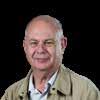
“If you imagine that our genes are like instruments in an orchestra and epigenetics are the musicians, together they form the symphony of life. Diet, stress and our environment are all factors that can affect offspring via epigenetic mechanisms.”
Professor Tony Hannan, Head of our Epigenetics and Neural Plasticity Laboratory explores the fascinating research area of epigenetics and how gene-environment interactions may be passed down and effect future generations.

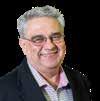

“We’ve never really known the biological and molecular processes that drive one behaviour over another. These tools are essential for understanding how we as humans update information and make decisions for the future.”
Associate Professor Jess Nithianantharajah, Head of our Synapse Biology and Cognition Laboratory, discusses a novel research tool used to discover new information about the brain chemistry behind motivation and learning.


“Dementias are still one of the most difficult diseases to understand and treat. We have become better at diagnosing dementia, but it remains a great challenge to find treatments that are effective and well tolerated. This is something we’re working hard towards.”
Professor Ashley Bush, Co-head of our Dementia Research theme, partnered with Maree McCabe, CEO of Dementia Australia in discussing the latest understanding and approaches to diagnosing and treating dementia.
“Through our research we’ve identified that iron starts to accumulate in the brain as we age and believe this can eventually become a problem and trigger certain damaging processes in the body.”
Dr Gawain McColl, Head of our Molecular Gerontology Laboratory, explores brain aging and the iron-blocking techniques that his team are exploring in worms to slow neurodegeneration.


“We’re used to thinking of Parkinson’s as a disease of the aging but we now know it actually starts a lot earlier. The nose is an open highway to the brain and we believe that loss of smell presents an early indication that something is going wrong.”
Professor Kevin Barnham, Head of our Neurotherapeutics Laboratory and Dr Leah Beauchamp, Postdoctoral Fellow in the same Laboratory, discuss the link between loss of smell and Parkinson's and how it could lead to ways to diagnose the disease earlier.
“Brain imaging allows us to see the structural network running all throughout the brain which can’t be achieved using any other research technique. These images created from mapping the brain are beyond exquisite.”
Dr Shawna Farquharson, our Chief Research Radiographer and Dr Christopher Tailby, Head of our Epilepsy Cognition Laboratory, delve into the fascinating and highly collaborative world of brain imaging and explain how it has changed how we understand and treat neurological conditions.

How can we improve brain health as we get older? This is at the forefront of research by a team at the Florey examining brain aging with the help of C.elegans roundworms. They have discovered that the answer might lie in a commonly-found mineral – iron. “Iron plays a crucial role in cell selfdefence. When cells become infected or cancerous, they can metabolise iron stores and ‘self-destruct’ through a process known as ferroptosis. As cells age, we believe ferroptosis can be triggered unnecessarily and contribute to age-related diseases such as Alzheimer’s disease and stroke,” said Professor Ashley Bush, Co-head of the Florey’s Dementia Research theme.
In their recent studies, Dr Gawain McColl, Dr Nicole Jenkins and Professor Bush showed that by blocking ferroptosis and lowering iron levels using two different approaches they could improve brain health in aging C.elegans animal models.

“What we found was that the animals not only lived longer, but they were also fitter for longer. We saw reduced frailty in the animals and most impressively, we were able to double the length of their typical lifespan,” explained Dr McColl, Head of the Florey’s Molecular Gerontology Laboratory who led the study.
“This research opens new prospects for healthy aging and treatment approaches for a range of neurodegenerative diseases. Our profound understanding of what happens to cells during biological aging means that we are now able to explore ways to reduce damage and, in turn, decrease the risk of age-related disease.”
The team are also examining ferroptosis-blocking therapies in the hope that early therapeutic intervention may hold benefits in reducing the prevalence of certain neurodegenerative diseases. Drawing on the outcomes of the work in C.elegans, the team are now trialling a potential therapy which could treat iron overload in Alzheimer’s disease.
“It’s an exciting time in medical research,” said Dr Nicole Jenkins, Senior Research Officer in the Molecular Gerontology Lab.”
“To understand processes as complex as aging and neurodegeneration requires truly multidisciplinary research and I feel fortunate to work with world class scientists at the Florey where such research is possible.”
It takes many minds working together to produce cutting edge research, discoveries and innovations. The Florey is a major hub for neuroscience and mental health research, and we recognise that we are stronger when we work together as part of innovative partnerships and collaborations to drive shared outcomes. We value our scientific, industry, government and community partners as they work with us to be pioneers in brain and mind research.
In 2020, the Florey strengthened our partnerships with organisations, universities and health services that leveraged our collective capability, capacity and capital to solve complex challenges of the brain and mind. We brokered commercial partnerships which were designed to accelerate the health and wealth impacts of our research. We also continued growing our local and international reputation for excellence to attract the best and brightest people and partnerships.
10
Companies
health impacts
We grew our online audiences, with 114% increase in the Florey’s social media followers and more than 3,200 people attending our online public lectures
The Florey’s research was referenced by scientists in over 120 Countries
We filed 6 new intellectual patents, working towards a goal of increasing the health and wealth of Australia
We developed working groups comprised of staff and students from across the institute to provide support for each other and the community during COVID-19, sharing our insights into professional development, parenting and maintaining scientific careers, mental health and social groups, promoting workplace engagement and collaboration
unite people, ideas and organisations to solve complex problems that transform society.The Florey partnered with over Multinational to deliver in the neuroscience field.
A hub for enriching partnerships
Throughout 2020, Parkinson’s disease researchers at the Florey found new ways to connect with the Parkinson’s community. ‘Parkinson’s Chat’ was six-part interview series created by the Florey and Parkinson’s Australia that gave people living with Parkinson’s and their families an opportunity to better get to know our researchers, ask questions and hear directly about their latest work and aspirations in better understanding, diagnosing and treating the condition.
Watch all the episodes of ‘Parkinson’s Chat’ on the Florey’s YouTube Channel youtube-square
Associate Professor Scott Ayton is investigating potential Parkinson’s treatments by translating findings in both lab-to-clinic and clinic-to-lab approaches.
Dr Laura Vella is studying the link between gut inflammation and motor impairment with help from special cell ‘bubbles’ known as extracellular vesicles.


Dr Leah Beauchamp is examining if loss of smell could be used as a diagnostic marker to detect Parkinson’s earlier in clinic.
Professor Clare Parish is researching whether stem cell and gene therapies used together could repair movement in Parkinson’s.

Associate Professor Lachlan Thompson is advancing potential stem cell-based treatments to a stage where they can be investigated in clinical settings.

Professor Kevin Barnham is exploring new ways to diagnose Parkinson’s earlier to improve the success of therapeutic intervention.


“At the start of January 2020 at my gym, I was asked to write down a major goal that I wanted to achieve during the year. I knew it was incredibly ambitious and even writing it down I was secretly thinking it wouldn’t eventuate because I was only one year out of my PhD.
I decided that I was still going to aim high. I pledged, ‘In 2020 I will lead a research grant to get closer to cure MND’.

Like everyone else, I couldn’t have predicted how much life was going to change after that. It was in July 2020 during Melbourne’s second round of restrictions because of coronavirus when things were feeling tough that FightMND delivered the incredible news. I re-read the email three times before it completely sunk in. I cried. I was going to be leading my own research grant.
Sharing the news with my team was an incredible feeling and I learnt that three of my colleagues were also successful in receiving grants of their own. We were setting out to diagnose, treat and find a cure for MND together and it felt phenomenal.
I am very grateful for the ongoing support and confidence in my research that FightMND has shown.
In my work I’ll be looking at the signatures of fat cells, called lipids, as a novel biomarker for MND. This builds on from my work identifying the importance of lipids inside the neuron for muscle stability and cell survival.
I hope to develop a blood test that detects lipid markers to more accurately predict disease progression and assess which treatments could be beneficial for MND patients during clinical trials. If successful, a simple blood test like this could be a real game changer for diagnosing MND.
I think a lot about about the generosity of FightMND’s supporters who made my research possible because it simply couldn’t happen without their support.
In 2020, our Motor Neurone Disease research group shared in recordbreaking funds raised by FightMND for novel research investigations.
The group are taking multiple approaches to investigate and develop new diagnostics and treatments for MND, and aim to reach the ultimate goal of a cure.
capsules
A/Prof Brad Turner is working to advance a drug therapy to clinical trials.
search Dr Sophia Luikinga is investigating lipids as a diagnostic biomarker.
cube
syringe
Dr Samantha Barton is developing a 3D-grown spinal cord model to study oligodendrocytes.
Dr Fazel Shabanpoor is progressing a drug delivery platform targeting the brain and spinal cord.

As with any researcher, what continues to drive me is the belief that I’ll be able to make a difference for people living with the disease that I study.”Dr Sophia Luikinga
“My overarching goal as a scientist working on a disease is to deliver better health outcomes for people,” says Professor Chris Reid, head of the Florey’s Neurophysiology of Excitable Networks Laboratory.

After almost 15 years of research, Professor Reid had what he calls ‘something potentially very exciting’ – a result in the laboratory which signaled a promising way forward for a new therapeutic compound for types of epilepsy that are experienced by children. The pathway from laboratory finding into a treatment that is available in the clinic for patients can be enormously challenging. Sometimes colourfully referred to as the translational ‘valley of death’, Professor Reid knew that bridging this valley would require a new approach, additional expertise in partners with global networks and different types of funding.
After working with the Florey’s Enterprise and Innovation team to develop a business case and approach various potential partners, Professor Reid is now confident that he is working with the right team in the form of a collaborative venture with BioCurate who work with researchers to translate their projects into preclinical investment opportunities.
“As a researcher, you quickly learn that collaboration is the key to success. Finding the best people in their field to work with and utilising their knowledge and experience is fundamental to translating successful research. The chemistry and clinical development expertise which BioCurate have provided has been an essential component of the current success of this project,” he explains.
“The partnership so far has seen us taking an idea that was developed in a dish and in mouse models, through to creating a potential therapeutic compound. We’ll soon be moving into the lead optimization phase which quickly becomes even more complicated, including addressing scientific questions like whether the compound can cross the blood-brain barrier, whether it is safe, and compliance areas of the regulatory system.”
With Professor Reid well on the way to bridging the research translation valley, he says that the key to the partnership is common goals.
“Although our motivations may be different, the goal is absolutely the same – delivering a successful treatment for epilepsy that’s available to patients,” says Professor Reid.
“For me, to wake up every morning, have an idea, and have the ability to translate that idea into something real for young children who have epilepsy and their families, is one of the most exciting things I could possibly do.”
In a bustling Melbourne laneway, a dazzling art display captures the essence of partnership that is inherent to the many wonderful clinical researchers of the Florey. Among these is Dr Shawna Farquharson, whose story has been celebrated in the Parkville Storytelling Project.
Around 25 years ago, Dr Farquharson was a Senior Radiographer working in paediatrics at Great Ormond Street Hospital in London. Every day, children would arrive battling the most complex illnesses. Every day, the brightest scientific minds would come together to work towards medical breakthroughs. And every day, clinical teams would deliver the highest quality of care, making a difference in the lives of each and every patient.
She began to understand the importance of partnership between radiographers, clinicians and patients and the vital role of the radiographer in bridging the gap between scientific advances and patient care. For Dr Farquharson, this remains one of the most rewarding aspects of her profession.
For over a decade now in her role at the Florey as Chief Research Radiographer, Dr Farquharson has contributed to ground-breaking neuroscience. Magnetic Resonance Imaging (MRI) has become a key tool in studying and understanding pathologies and trauma that effect the brain.
She says it is not only a privilege to work at one of the world’s leading neuroscience Institutes, but that seeing patient’s lives transformed makes it even more worthwhile.
When a patient returns after surgery for a follow-up MRI scan, now seizure free and living life to the fullest for the first time, she is always reminded how important it is to keep striving to make a difference.
Shawna was recently appointed President of the International Society for MR Radiographers and Technologists where she hopes to inspire and empower MR Radiographers and Technologists around the world to become future leaders of the profession.
“As a Radiographer, I am extremely proud to have my profession recognised for its contribution to internationally renowned science and clinical research,” said Dr Farquharson.
“The artwork beautifully captures the breadth of a Radiographer’s role in partnering with both patients and healthcare professionals to support scientific and clinical advances. It is an honour to represent the Florey in this project.”

A hub for enriching partnerships

With one in four people currently living with a mental health illness the need for new and targeted therapies is critically important. Yet it takes on average 17 years for a new therapeutic to assist those with mental illnesses to move from the laboratory bench to clinic where it can help people. The Florey wants to change this.
As part of our commitment to mental health research, we’re working hard to bridge this translational gap by uniting with other research organisations who with complementary areas of interest, to bring together new ideas and approaches. Our vision of success is being able to deeply understand the biological mechanisms that underpin specific mental illnesses through applying our expertise in neuroscience, finding new methods to provide early and accurate diagnosis, and developing treatment options that can assist people living with mental illness.
The Florey partnered with Orygen, a leading youth mental health organisation to kick-start a series of collaborative events, bringing together researchers from both organisations to share findings and perspectives. In late 2020, the Melbourne School of Psychological Sciences also joined as participants in the ongoing event series. Professor Andrew Lawrence from the Florey’s mental health research team emphasised the need for a strong culture of collaboration to provide new advances.
“At the very core of what we all do in our respective research fields is a desire to improve the outcomes for people who are living with mental illnesses. Joining together in these types of events and sharing what we’ve each learned, means that we can build new multi-disciplinary research approaches in a complex field.”
As part of our commitment to providing a well-rounded mental health research workforce of the future, the Florey has joined as a partner in a new multi-institute Mental Health PhD program alongside the University of Melbourne, Centre for Mental Health, the Department of Psychiatry, the School of Psychological Sciences, and the Centre for Youth Mental Health. Sharing responsibility for shaping and steering the future mental health research workforce, the Florey will be part of ensuring that future mental health researchers are connected with peers across different disciplines.
Over 60 PhD researchers are involved in the program which brings together perspectives from biomedical research, psychiatry, psychology, epidemiology, community health, social work and others. Students from the Florey also continue to participate in the neuroscience training provided by the institute.
PhD student Annai Charlton has been part of the program over the past year and explains that, “The mental health PhD program creates an inspiring and supportive community of researchers who are united by a common passion for improving mental health and wellbeing,” said Ms Charlton. “The experiences in the program have helped with my current research and guided my future directions.”
The Florey’s staff and students are the bedrock of our research and success and have a strong commitment to excellence and integrity. We have wonderful people who demonstrate enormous collective strength, and as a cohesive and connected organisation we are greater than the sum of our individual parts. We have an unwavering commitment to diversity and inclusion and a desire to provide a place of employment with tremendous opportunity for everyone.
In 2020, the Florey supported our staff and students to expand their skillsets by providing mentoring, manager training, whistleblower training and career development pathways. We created and rolled out online resources to further learning in areas of scientific knowledge and broader skill development, including a series of events that were designed to assist our researchers to translate their pioneering research into products and services.
22
We launched a New Fellowship for Florey mid-career researchers which recognises pioneering research by a member from an underrepresented community
We successfully transitioned a large proportion of staff and students to work from home and recognising that an inclusive workplace is better for everyone, implemented a New Flexible Working policy for all staff
Student completions, supporting the next generation of bright neuroscientists to solve the greatest challenges of brain and mind science
We became a member of the Diversity Council of Australia, the national the peak body for diversity and inclusion in the workplace
We provided our staff, students and their families with More tools to assist their own mental health and ways to lead conversations about the importance of this by expanding our Employee Assistance Program and delivering webinars on a variety of mental health topics
In 2020, the Florey launched a new internship program to provide ‘hands-on’ experiences in science communication, commercial applications of research, and translational projects by connecting early career researchers with support service staff to work on projects over a 10-day paid period. Head of Public Affairs and Strategy, Melanie Carew, explained that the internship program provided many benefits for early career researchers and for support service teams.
“There are so many talented early career researchers at the Florey who are keen to learn. They already receive exceptional scientific training and so we wanted to provide them with short experiences that give them a chance to apply these skills to exciting new projects that our support service teams were working on,” said Ms Carew.
“The concept for the internship program was in place but when restrictions came into effect in Victoria and many of our students needed to delay experiments, we decided to fast-track the idea to provide a new way for people to stay connected and conduct meaningful work.”
Following a call for volunteers, the program was taken from concept to pilot by a working group of ten people that included people from across support services, research teams, students and others.
Professor Paul Adlard, Head of the Synaptic Neurobiology Laboratory, was one member of the working group and said that the model is designed to complement the traditional scientific training already on offer at the Florey with a paid opportunity to learn innovative, strategic skills for broader scientific operations.
“It’s a given that Florey researchers will be excellent at science, but we also want to future-proof our scientific workforce with the necessary tools to be the visionary pioneers of the future. The internship program’s combination of learning components, hands-on projects and mentoring provides a unique chance for our early career researchers to learn more in their own institute,” said Professor Adlard.
Following positive feedback from interns, support service managers and supervisors, the Florey internship program will be part of the Florey’s continued professional development opportunities for our early career researchers.
The Florey extends our appreciation to the Florey internship working group led by Melanie Carew with members Professor Paul Adlard, Dr Carli Roulston, Dr Erin McAllum, Dr Shaz Sivanesan, Donna Parker, Kevin Law, Sydney Juan, Myat Noe Han and Anna Xanthis.

What sparked your interest in the Florey internship program?
RS: I’m a research assistant at the Florey working on a study that is investigating the link between type 2 diabetes and dementia. Due to COVID-19, our face-to-face assessments with participants had to be temporarily put on hold. My first thought was what can I do now? When I heard about the internship program, the idea of learning more about how I can communicate the importance of the Florey’s research to the public sounded really interesting and a great way to develop my skills.
How have you practiced your new skills since the internship project?
RS: Since the internship I have been able to use my social media skills to get involved with my team’s stroke Twitter account. I have a new appreciation and insight into the way posts are curated, and the reasons why social media is a valuable tool to communicate our research back to the public. I also used my communication skills and some creativity to create an end of year card for our research participants. They are important to our research and many of them are interested in the findings we are discovering.
• Rebecca Singleton, research assistant, developed the Faces of the Florey social media campaign to showcase the people behind Florey research and delve into what drives and inspires their work
• Jamie Jie Mei Liew, research assistant, developed a public relations and advertising plan for a 2021 Florey symposium
• Alex Oman, research assistant, developed a database used by the public affairs team, and provided recommendations around highprofile awards that recognise Florey staff and students for their contribution to biomedical research and the wider society
• Annai Charlton, PhD student, developed a concept for a virtual community engagement program which will be piloted in 2021
• Dr Maria Daglas, postdoctoral research fellow, worked with the public affairs team to develop guidelines around the use of appropriate, inclusive and non stigmatising language for a disease area
How did this internship help your career goals?
JC: My vision for the future of medicine is based on innovation in technology, through which we can predict, model, personalize, and treat diseases in a more controlled and transparent manner. The internship project was the perfect opportunity to use my skills to their fullest while also learning more about the interface between business, science and innovation from experts in this area at the Florey, and how this can shape the future of medicine and biomedical research.
What did you learn during your Florey internship project?
JC: I was working on a project that explored different ways the Florey could address the challenge of translating laboratory research into clinical care. I spoke with different stakeholders, investigated international models and then presented my work to the Florey’s executive team. This project helped me develop more flexibility, resilience, adaptability and some out of the box thinking. I’m proud that the work that I did on this project has contributed to a large project that the Enterprise and Innovation team is now developing.
• Jiahui Chu, Master of Biomedical Science student, researched international models that provide a systems approach to increasing connections between research and clinical care
• Dr Willian Korim, postdoctoral research fellow, investigated options and provided recommendations for an integrated software-based system to be used by the Florey’s enterprise and innovation team
• Dr Shashank Masaldan, postdoctoral research fellow, will be reviewing and assessing commercial partnerships for a piece of Florey intellectual property
• Volkan Uzungil, PhD student, scoped and assessed potential business development opportunities for a piece of Florey intellectual property
• Dr Fatemeh Zanganeh, postdoctoral research fellow, investigated and made recommendations around bioresources management systems
The scientists in the Florey’s mental health research theme devote their time to understanding the biological mechanisms that underpin mental illnesses and the various environmental factors that may influence these mechanisms. After a year when changing circumstances with COVID-19 amplified many of these external factors for people, we asked four of our mental health researchers to share their reflections.
Professor Andrew Lawrence, Division Head
and a Group Leader of the mental health research theme:
“Mental health is an incredibly complex field and although we were all in similar circumstances in Victoria, each person had a different individual experience. The terrible loss of life across the globe, financial instability and the simultaneous loss of many of our rituals and positive social interactions means that not only is COVID-19 an immediate public health crisis, it’s also a chronic stress event which could amplify any underlying issues to cause mental health problems going forwards. If you’re experiencing difficulties coping, I’d strongly recommend speaking with a doctor about strategies you can put in place to reduce the long-term impact of this stress.”
Katie Drummond, PhD student:
“I use modeling to investigate how social isolation impacts on brain function and mental health. When restrictions on movement came into place across the world, it was clear that my pre-clinical research was applicable to the social isolation that many people suddenly faced. My research shows that social isolation can have an increased impact on vulnerable populations, including the young, elderly or people who have an existing mental illness. Importantly, my research has shown that exercise can be a protective factor against this.”
Dr Terence Pang, laboratory head:
“My research addresses how environmental factors cross generational boundaries and influence the lives of children and even the grandchildren, of those affected. This suggests that the true impact of the COVID-19 pandemic from a mental health perspective may not be understood for decades, but it will likely leave its mark on future generations. I’ll be continuing my work to understand the transgenerational impacts of stress and trauma and working to translate these findings into clinical tools so that we have effective risk mitigation strategies and a range of management options in case of future distressing events.”
Associate Professor Jess Nithianantharajah, laboratory head:
“My research focuses on our genes, specifically how changes in the molecular machinery that controls connectivity and communication in our brains can create either vulnerability or resilience to mental illnesses. Understanding these biological factors is assisting us find improved treatment options that can be tailored for individuals with mental illnesses based on their specific symptoms. While we can’t change our genetics, there are things that we can control to manage and improve our mental wellbeing such as having the right amount of sleep, good nutrition, regular exercise, seeking out social support and medication if needed.”

A place for empowering people
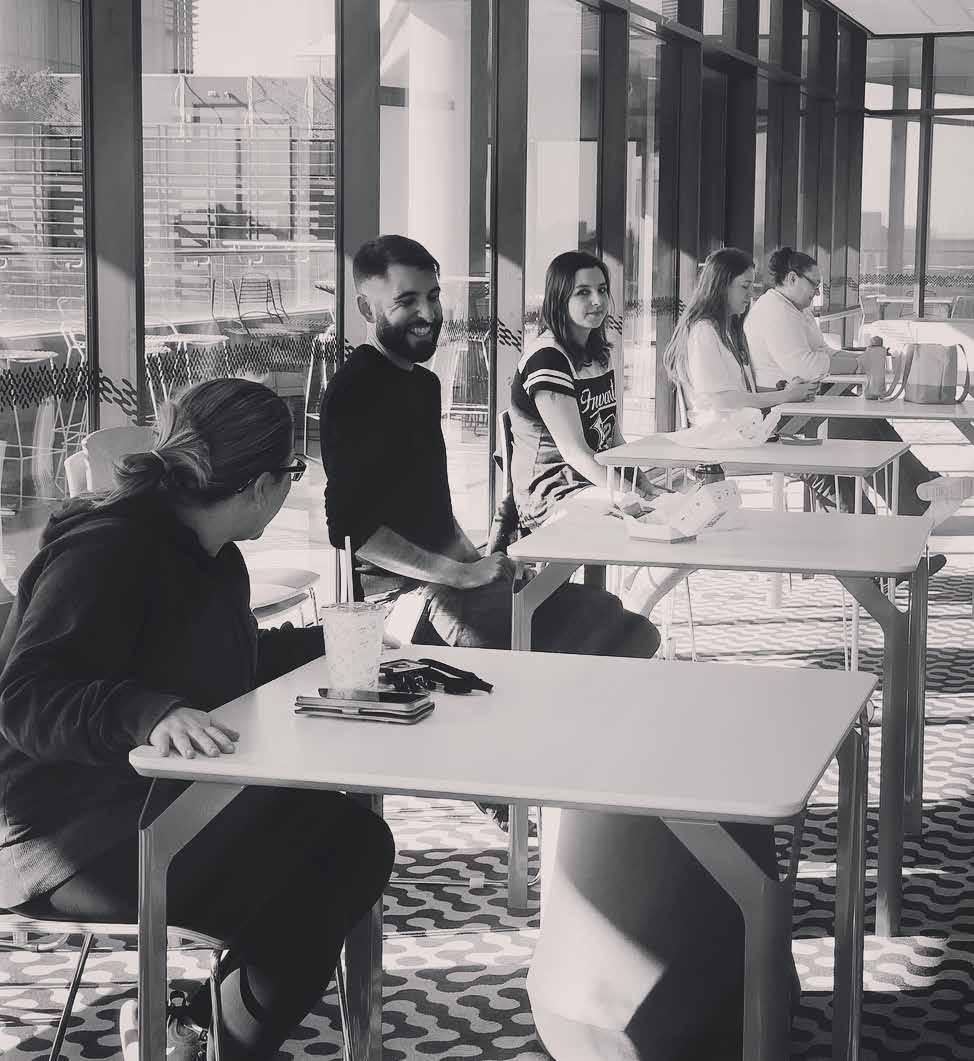
The brain is known to be able to adapt to change by rewiring and reorganising structure and connections, through a phenomenon called neural plasticity. When the COVID-19 pandemic disrupted the daily lives of Florey staff and students, they borrowed a little inspiration from the brain and adapted to the change in working from home by reorganising professional development initiatives into online formats and finding new ways to connect and engage.
The Florey’s Enterprise and Innovation Team launched an entrepreneurial researcher program for laboratory heads and senior postdoctoral fellows. Through a series of workshops and coaching, participants enhanced their ability to engage with potential commercial and non-government partners to build new translational research ventures. The team also ran a series of webinars on research collaboration agreements, patents, strategic project partners, working with venture capital and regulation in clinical trials.
The Florey’s Human Resources team organised a leadership training program titled “Managing teams during COVID” to assist managers with navigating change and supporting their teams while managing remotely. Head of Human Resources, Kylie Doyle said that the leadership shown by managers in guiding teams through the restrictions in Melbourne was inspiring.
“Effective leadership is the ability to evolve, adapt and turn challenges into opportunities. Boosting the skills of our managers during this time helped them to inspire their teams and work collaboratively to overcome challenges.”
The Florey Postdoctoral Association (FPA) held a session titled “COVID-19 career & funding interruptions: what’s happened & where to go next”, bringing together speakers from research, industry, the Florey grants office and the University of Melbourne.
Postdoctoral research fellow and Head of the FPA, Dr Paulo Pinares-Garcia emphasised the need for early career researchers to build up their arsenal of skills in the face of a changing medical research landscape.
“Through this session we could provide valuable insight into how early career researchers could minimise funding disruptions due to the COVID-19 pandemic and practical steps to maximise grant sources,” said Dr Pinares-Garcia. #5
#4
The students of Florey Institute (SOFI) boosted the collective sprit and productivity among Florey students while working from home through virtual writing sessions.
The sessions coordinated by SOFI Masters representative Brandon Richards provided a structured schedule of uninterrupted writing time alternating with short breaks for socialising.
“One thing 2020 has taught us is the importance of connections. Having virtual company of fellow students while writing helped create a supportive and collegial environment. As a result, we could increase our productivity as well as our confidence to tackle big writing tasks,” said Mr Richards.
The Florey’s research assistant committee (FloRA) promoted resilience and the importance of mental health through a short series of discussions on adapting to the new normal of working from home.
Hosted by Research Assistant, Liubov Lee-Kardashyan, the discussions involved sharing tips on adjusting work and lifestyle in response to the challenging pandemic situation.
“This situation was new to us all so we took a peer learning approach and shared with one another on what was working best for us for while working from home,” said Ms Lee-Kardashyan.
A place for empowering people
I would like to wholeheartedly thank you for continuing to give in 2020 during particularly uncertain times. COVID-19 has demonstrated now more than ever that Australia must continue to invest in medical research for the sake of our health and wellbeing.
As the Chair of the Foundation Council, I work side by side with the fundraising team and our mandate is to support medical research both now and in the future by prudently managing the donations and bequests you make to the Florey. We work closely with our scientists to ensure donations are directed to the areas of greatest need. By working together with our community partners and generous donors we ultimately enhance medical research into diseases of the brain and mind where and when it is needed, based on the potential for discovery.
I am very pleased to advise that the Florey Future Fund continues to grow and has now reached the milestone of $12.5 million. We’re especially thankful to the Dowd Family for their incredibly generous donation of $5 million to seed fund this endowment.
On behalf of the over 600 Florey scientists and students, thank you for joining in the fight against deadly diseases and illnesses, by helping to find better treatments and cures. We can’t do it alone, but together with your support and the hard work of our researchers, we have a fighting chance.
The Florey would like to acknowledge the generosity of the Collier family through the John Collier Postdoctoral Travel Scholarship. Since 2013 the scholarship has recognised seven high-performing Florey scientists investigating Parkinson’s disease. The prize enables students to attend a recognised national or international scientific meeting, visit a laboratory for collaborative research or learn new techniques.
Since its inception, the prize has awarded $35,000 in funding to upcoming Florey researchers.
“My late husband John had Parkinson’s disease. I was his carer so I learnt a lot about it. After he passed away, my family and I decided to support research into Parkinson’s,” explained Deirdre Collier.

John had an illustrious career in mining and was the former chief executive of Gold and Minerals Product Group Rio Tinto. A passionate painter and keen cyclist, he was first and foremost committed to promoting young people and empowering youth.

In 2020, the award was given to Dr Niamh Moriarty who is conducting research on the development and improvement of stem cell therapies for Parkinson’s disease. After receiving the award, Niamh said, “I am extremely grateful. This will enable me to showcase my findings at international conferences in the fields of neural regeneration and stem cell therapy in Parkinson’s disease, while also giving me the opportunity to establish exciting new international collaborations.”
When asked what message John might have conveyed to Niamh, Deirdre didn’t have to think twice. “He would have said just go for it! Don’t have fixed ideas. Be adaptable.”
Deirdre is a mother of six and grandmother to thirteen. Despite her active lifestyle she has managed to stay in close contact with the Florey over the years. “I’ve been to some terrific lectures. I’ve also visited labs with my grandson who’s keen on science,” explained Deirdre.
“I remember talking to a student who was going to the labs at midnight to look after stem cells. I was amazed by his dedication; it is truly impressive.”
The impact of these gifts is also impressive. Associate Professor Scott Ayton was awarded the scholarship in 2016. Today, Scott is an accomplished mid-career Florey researcher leading the Translational Neurodegeneration Laboratory and collaborating with the world’s best to translate discoveries into clinical trials which offer new hope to patients with Parkinson’s and Alzheimer’s.
Scott used his John Collier Postdoctoral Travel Scholarship to present his early research at conferences, develop professional networks and meet peers from across the globe. He explained, “So many of the connections I made during that time are part of the collaborations I am working in today.” His trajectory is testament to the transformative nature of these gifts.
“When you give a scholarship, the investment goes well beyond that one event or project. You’re investing in a career. Every donation builds on the foundations of that person. A gift of this nature provides building blocks for a career, and we all know every bit helps,” concluded Scott.

2020 Dr Niamh Moriarty, postdoctoral researcher in the Florey’s Stem Cells and Neural Development Laboratory
2019 Dr Rachel McQuade, now an NHMRC Emerging Leader Fellow
2018 Dr Jennifer Hollands, now government and academic liaison at an Australian commercial entity which leads cutting edge manufacturing for cancer and rare diseases
2017 Dr Erin McAllum, now project manager for the BioMedTechHorizons program at the Australian Government’s MedTech and Pharma Growth Centre, MTP Connect

2016 Associate Professor Scott Ayton, now head of the Translational Neurodegeneration Laboratory at the Florey
2015 Dr Ting-Yi Wang, now a postdoctoral research fellow investigating targeted drug delivery and nanotechnology
2014 Dr Jonathan Niclis, now a specialist scientist at a leading international healthcare company
During 2020, the pace of potential lifesaving research has continued at the Florey in the face of trying circumstances. Contributions by generous benefactors provide essential support, alongside government grants. Backing from donors, corporations, foundations and organisations act as a catalyst for our scientists, funding new ideas and innovations as they emerge - driving our ability to chase discoveries and to improve lives. We are grateful for the generous investment from all of our supporters in our relentless pursuit to improve the prevention, detection and treatment of diseases and disorders of the brain and mind.
Individual Giving & Philanthropy: $100 - $999
Colleen Abbott | Anne & Ian Ada | Moira Adam |
Christine Adams | Wendy Adams | Yvonne Ahmet
| Frances Allen | Lauris Allen | Keith & Margaret
Anderson | Richard & Anne Andrews | Frank
Archer | Marie Arendsen | Barbara Ashton | Tony
Atkinson | Philip A’Vard | Diane Ayton | Peter
Baird | David & Judith Balcombe | Rosemary
Baldasso | Helen Baldwin | Joyce Bambery |
William E Bamford | Kay Barber | Janet Barchett
| Kevin & Pam Barham | Philip Barlow | Phil & Judy Barnard | Nicholas Barton | Peter & Sharon
Beaconsfield | Walter Beale OAM JP | Heather
Bear | Josephine Beatson | Judith Beaufort |
Sally Beavis | Doreen Bell | Robert Bell | Alan
Benger | John Benger | Sandra Benjamin OAM |
Valerie F Benson | Priscilla Beresford | Silvano
Bertolin | Coral Beulke | Fay Bice | Heather
Bione | Katie Bird | R D G & Marjorie Birrell |
Rudy Birsa | Debbie Black | Olga Black | John & Jacqueline Blake | Betty Blaskett | Jocelyn
Bornemissza | Steve Boxshall | Ken Boyle |
Michael Boyt | Bronwen Bray | Kerry Breheney |
Bill & Marie Brennan | Janette Broom | Dennis J
Bryant | Louise Buchanan | Hans & Sally Bufe |
Beverley Bull | Margaret Bullen | Adair Bunnett
| Peter Burke | Barbara J Burrell | Norman &
Kath Bury | Jarrod Byham & Sally Emerson |
Carol Byrne | Tess Cafarella | Rosemary Callow |
Elizabeth Cam | June Cameron | Alison Campbell
|
Pete & Glenice Campbell | Keith Cattach | Theo
Cehun | George Chabvonga | Anthony Chaloner
| Sylvia Charlton | Candice Chemaly | Derek
Clapton | Diane Clark | Robert Clarke | Maija
Clarke | Barbara Coffield | Catherine Coghlan |
Sally Cohen | Alison Collett | A Collins | David
Copolov AO | Helen Corcoran | Kevin Cosgrave
| Sue Course | Helen Cowan | Richard Coyne |
Pauline Craig | Lloyd Crawford | Joan Creber |
Annabel Crook | Fiona Cubitt | Joy Curtis | Henry
Cvik | Arthur & Anne Davey | Geoffrey Davey |
Celine De Silva | Benjamin & Leanne Deutscher |
Joseph Ditoro | J & Dianne Dixon | Irene Doddrell
|
Ciaran Doherty | David Doig | Sarah Donnan
|
Antoinette Doran | Michael Dowling | Kevin
Doyle | Rosemary Drenen | Alison Driver | Terry
Drover | Jan Dunbar | Kimiko Duncan | Dierdre
Dyer | Celia Dynon | Margaret Dyson | Geoffrey & Pauline Eastmure | Jennifer Edwards | Ali Eideh
| Marie Einoder | Barbara Elliott | Gary Elliott
| Robin Elliott | Peg Elmore | Emily Elst | John
Emerson | David Farnsworth | David Feldman
| Zandy Fell | Paula Field | George Fink | Tony
Fisher | Anne Fletcher | David Forrest | Isolde
Forstmanis | Ian Foster | The Freilich Prescribed
Private Fund | Gemma Furtado | Patricia
Galbraith | Jenny Galloway | Siok Gan |
Dorothy M Gannon | R Gehrig | Lesley Gerrish
| Gwenda Gibbs | Tess Gibbs | Norman & Lorna
Gilmore | Clare Gleeson-McGuire | Caroline
Gliddon | Suzanne L Godwin | Tony Goldschlager
| Margaret Gonshor | Isabel Goodwin | Patricia
Gordon | Susan Gordon | Lesley Gorrell | Dirk
Goudberg | Debra Grace | Susan Grant | Ian Gray
| Louise Gray | Peter & Jocelyn Gray | Malcolm
Kingsley Green | Gwenda Greenwood | Noel
Hall OAM | Shirley Hallows | Joan Hamilton | Christopher Hammond | Barry Hancock | James Hancock | Katherine Hannan | Hartley Hansen
QC AM | John Harcourt | Shane Hargreaves | Lucy Harper | Yvonne Harper | Judy Harradence | Richard Harrison | John Hasker | James Hawkins
| Ronald Hayes | Helen Haynes | Brian Head
| Ross & Rochelle Hedges | Peta Heffernan | Elizabeth Heinze | Pam Hermansen | Wilma
Herschell | David Hewett | Loris Hewett | Mabel Hibbert | Daryl & Roslyn Hill | Geoff Hill | Michael & Lorna Hipkins | Sarah Hirschi | Winifred Hirst | Annelie Holden | Judy Holden
| Dorothy Holland | Chris Hopkins | Julian & Christine Hopper | Robert Howey | Constance
Howse | Maria Hudson | Timothy Hutton | Joan Ikin | G Jacobson | George Janko | Anne Jaques | Brian R (Peter) Jessop | Michael & Heather Jobling | Patricia John | Dick & Lorna Johnson | Carolyn Jones | Elizabeth Jones | Joan Jongebloed | Ruth Kain | Albert Kaplan | David Kaufmann | Jillian Keetley | Peter Kelly
| Peter Kelly | Stephen Kenmar | Pat & Alun
Kenwood | Bryan & June Keon-Cohen | Joan
Kerr | Wesley Kilham | Jodie Killer | Leslie
Kilmartin | Terry & Janet Kinsella | A J Kirkham
| Janice Korevaar | Nina Kraskov | Geoff Kroker
| Marie Ku | Barry & Ann La Fontaine | David
La Fontaine | Kwee-Yin Lai | Meriel Laird | Don Lancaster | Marigene Larew | Frank Larkins
AM | Peter Lauritsen | Judith Lawrence | Ingrid
Leibbrandt | Peter Lemon | Iris Alison Leslie
| Patricia Levy | Bruce Lithgow | Clare Lo | Elizabeth Loorham | Anna Louey | Peter Lupson
| Kevin Luscombe AM | Frances Luxon | Nina
Macgeorge | Charity Mackinnon | R & M Maeder
|
Olga Magee | Leonard Makin | Elaine Mann |
Jayne Manzie | Margaret March | The Marchris
Family Charitable Gift | June Marks | Ruth
Martin | Heather Mason | Janet Mather | Mavis
McAllister | Darryl McAndrew | Peter McArdle | Linda McArthur | Deborah McBride | Ian McCay |
Phyllis McConchie | V M McCormack | Katherine
McGloin | Alexander McIntosh | Doug & Janice
McIver | Bernice McKelvie | Bruce McKenzie | John A McKenzie | Raymond McLean | Theresa McManus | Betty Meadows | John Michaux | Donald Mierisch | Fiona Miller | John Milne |
Samuel & Sadie Mir Foundation | John & Heather
Mitchell | John & Elizabeth Mitchell | Nelly
Mitchell | Heather Mitchener | Erika Mohoric
| Gillian Montgomery | Gai Mooney | Alison
Morgan | Craig Morgan | Garnet & Christine
Morgan | Inge Morter | Richard Moshinsky | Ann
Muffatti | Jenifer Mullen | Bruce & Judy Munro |
James Munro | Joan Nathan | Amanda Naylor |
Soh Neo | Alison Nghiem | Pamela Noble | Nola
Nugent | Helen Oakes | Anne O’Brien | Doris
Enid O’Brien | Joanne O’Connell | Suellen Ohl |
Bob Oldfield | Kerry O’Meara | Sue O’Neill and Enid Telford | Thomas Ophoven | Damien O’Shea
| Marcia O’Shea | Mary O’Sullivan | Ashley Parker
| Scott Parker | Trish Parker | Judith Parkes |
Ann Parris | Frances Parris | Eleanor Partridge
| Gunvant Patel | Jean Paton | Patsy Patten |
Janet Pavlakis | Vanessa Payne | Ross Peacock |
Evelyn Pearce | Chris Pearson | W A & P Pearson
| William Pearson | Doug Pedler | Elizabeth
Pender | Freda Perahia | Wayne Pethick | Sylvia
Petryk | Ian Phillips | Glenyse Pianta | Michelle
Picker | Dorothy Pill | Pincus Family Foundation |
Pearl Pinto | Jeff Piscopo | Ken Potter | Katherine
Psomas | Suzanne Pullen | Margaret Raspin |
Verna Rattray-Wood | Judith Raymond | Sam
Recht | Tannia Recinos | Jennifer Reid | Ann
Reid | Donald Rewell | Ruth Richardson | Mary
Richardson | Janet Riddell | Joyce Risstrom |
Marius Roberts-Szudzinski | Murray Robertson
| Patricia Robilliard | Maree Robinson | Dianne
Rock | John & Margot Rogers | Bruce & Judy Rose
| Bradley Ross | M Rothman | Jennifer Ruthen
| S Samra | Margaret Sanderson | Colin Sando
| Lauren Sanford | Norman Sargeant | Henryk
Schneider | Mary Semple | John Seymour | John & Pamela Sharwood | David Shaw | Frances & Keith Shaw | Andrew Shenton | Jo Shetliffe |
Rohan Shukla | Alexandra Siapantas | Alfonsina
Sicari | Elizabeth Sier | Kenneth J Sims | Susan
Sims | Robert & Elisabeth Sinclair | Eileen Slack
| Justine Sloane-Lees | The Slome-Topol-Rosen
Family Charitable Trust | Betty M Smith | Carol A
Smith | Keith Smith | Laura Smith | Meta Smith
| Graham Snell | Kathleen Spain | Alexandra
Spremic | Edward Stabb | Glenda Stacey |
Stanovic Family | Christine Starcevic | Ralph & Maureen Stavely | Beryl Steinke | A W Stephens
| Judy Stephens | Betty Stinson | William Stone
| Arnis Stonis | Melanie Strathearn | Shirley
Strossa | Stephen Stuart | Takako Subocz |
Kange Suda | Greg Sullings | Lyndall Sullivan
| Ronald Sultana | Celia Sutterby | George
Svenger | Elizabeth Swain | Jill Swan | Peter
Swan OAM | Peter Symonds | Angelo & Ernesta
Taranto | Ann Tauber | Anne Taylor | Wendy
Taylor | Linda Thomas | Wendy Thomas | Karlene
Thompson | Elizabeth Thomson | John & Leslie
Thrum | Andrew Tinney | Joan Tomlin | Norma
Torriero | Evelyn Townsend | Gad Trevaks AM |
Elizabeth Trevena | Jan Troup | Eugenia Tsaclidis
| Margaret & Peter Tse | Eddie Tucker | Joan Tullo
| Bruce Turnbull | Valerie Turnbull | Margaret
Ullin | Eleanor U’Ren | Jennifer Vallins | Cathy
van der Zee | Henri van Reesema | Christine
Vincent | Michelle Vong | Wendy Wagstaff | J R
Walker | Judith Walsh | Irene Ward | Jake Ward
| Dorothy Warren | Coral Watkins | Mark & Ruth
Watson | Geoffrey Webb | Philip Weickhardt |
Geoff & Anne Welsh | Neil Westaway | Trevor &
Crystal White | Robyn Whiteley | Kaaren Whyte
| Suzanne Will | Harry Williams | Kim Williams
| Vera Williamson | Dennis Wills | Scott Wills |
Nola Wilmot | Timothy Withers | Liz Wood | Joyce
Woodroffe | Rosemary Worssam | Judith Wright |
Gwen Younger | Barbara Yuncken | Edmund Zarb
| Stasia Zika
Individual Giving and Philanthropy:
$1,000 - $9,999 David Abraham | Joan Adler |
Michael Aitken | Pauline Atkins | James and
Judy Allen | Rita Andre | Neal Blewett AC |
Patricia Boekel | Graeme Bowker | Arnold
& Mary Bram | Edward & Hazel Brentnall |
Grace Cavanagh | Diana Cherry | Nathasha
Choi | Faye Clarke | Patricia Clennett | John &
Christine Collingwood | Brian Connor AM | Mark
Costello | Geoffrey Cottrell | John Coughlan |
Keith Curry | Cuthbertson Family Fund | June
Danks | Eril Deighton | Rose Downer | Susan
Duncan | Andrew Erikson | Carolien Evans |
Janine Ferguson & Graeme Ellen | John Floyd
| Fred Frohlich | Rosemary Geer | Peter &
Janet Gilbertson | Shirley Gionfriddo | Andrea
Goldsmith | Louise Gourlay OAM | Peter Gray & Colette Reeves | Lesley Griffin | Sandra
Hacker AO | Harbig Family Foundation | Robert
Henwood | Rosanna Hoad | Bill Holdsworth | I
Y Hoolihan | Andrea Hull | John Izon | Kathleen
Johnston AM | Malcolm Kennedy | RE and NA
Kent | Peggy Knight | Pamela Knott | Helen
Kosky | Noel Langford | Will & Angie Leaf |
William P Lewis | Brian Marshall | Graeme
Matthews | Jenelle McColl | Muriel (Pat) McLaren
|
Adrienne McMahon | Elizabeth Mildwater |
Judith Moore | Helen Ng | June Nixon-Smith | J
and M Nolan Family Trust | Valerie Osbourne |
Patricia Peck | Mary Phiddian | Ron Pitcher AM
| Ann Poole | Deborah Reich | Ralph & Ruth
Renard | Caroline Richardson | Stephen Rix |
Judy Roach | V N Sanders Charity Trust | Say
Family Endowment | Frank & Anna Shelton | Nell
& Hermon Slade Trust | Russell Stewart | Gary
Stiliano | Richard Stradwick | Christine Sweeney
| Dorothy Tagg | Gregory & Wendy Taggart |
Jenny Tatchell | Kathryn Thaniel | Debbie & Peter
Thomas | Jean Thomas | Michael Troy | Devin
Trussell | Duncan Tuck | Kay Tudor | Katrina Tull
| Patricia Turner | David Vernon | John & Robyn
Vroland | Richard & Juneth Wall | Karen Wells | John White | John Wilde | Garth Willey | Margaret Wilson | Sineke Winter | Katharine Wood | Susanna Woodall | Meredith Woods
Individual Giving and Philanthropy: $10K+
Lorraine & John Bates | Ian & Maria Cootes
| Brian Davis - Brian M Davis Charitable
Foundation | Helen K Groves AO | Hearts and Minds Investments | JDR Family Trust | Harold Mitchell AC | S Baillieu Myer AC | Judith A
Overbeek | RobMeree Foundation | The Stuart Leslie Foundation | The Valda Klaric Foundation | Graeme Peter White | James S Wiley
Brains Trust Donors Christine Aarons | Graeme & Letitia Billings | Angelo Bladeni | Colin & Angie
Carter - Carter Family Foundation | Lyndsey
Cattermole AM | Anthony & Geraldine Conabere
| Barbara & Will Darvall | Tamie Fraser AO | Tom & Jennifer Garlick | Wayne & Suzanne Gill | Peter & Sandra Gillooly | Ai-Gul & Andrew Guild | Ronda Hall | Linda Herd | Kate and Warren Joel
| Andrew Keen | Hugh Kelso & Michelle Quigley
QC | Peter & Lois Lumley | Harold Mitchell AC
| Bruce Moran | Lana Moran | Dennis Nassau
| The Hon Peter Nixon AO | Ross Oakley OAM & Christine Oakley | Anthony & Helen Pyman
| Caroline Robertson | Greg Roebuck - The Roebuck Foundation | Nicola Rollerson | Gary & Glenise Travaglia | Richard & Juneth Wall | Meredith Woods
Brains Trust Ambassadors Alastair Clarkson
| Robyn Davidson | Peter Hudson AM | David Koch | Eddie McGuire | Gillon McLachlan | Neil Mitchell | Pharmacy Alliance | Mike Sheahan | Gemma Turvey | Steve Vizard
Community Groups Berwick Opportunity Shop
Incorporated | Cumberland View Retirement
Village | Inner Wheel Club of Bairnsdale | Inner Wheel Club of Pakenham | Kilsyth Scottish
Country Dance Group Inc | Mooroolbark
Umbrella Group | Pakenham Opportunity Shop | Wonthaggi Italian Senior Citizens
Companies Bendigo Stadium | BP Employee
Matching Fund | Clara Biotech | Darvan Pty
Ltd | Marin Accountants | National Australia
Bank Workplace Giving | Qiankang Life Science
Melbourne R&D Centre | Reece Australia | Ritchies Victoria Community Benefits Program
| Storr Transport Workplace Giving | Suncorp Group Workplace Giving | Thiess Pty Ltd Workplace Giving
Gifts in Wills Estate of Ethel May Billing (incl Peter Billing Trust) | Estate of John Kilian
Brunner | Estate of John Campbell | Estate of Marie Cadle Campbell | Estate of Peter John
Irwin | Estate of Jill Annette Lynch | Estate of Marjorie Isabel Marris | Estate of Pierina (Lucy)
Lucia Piccoli | Estate of John David Richards
| Estate of Margaret Ilona Robson | Estate of Eleanor Frank Roth | Estate of Henrietta Ethel Schefferle | Estate of Marjorie Constance and Akos Talan | Estate of Doreen Merle Taylor | Estate of Jocelyn Mary Traill
Grants Alzheimer’s Association (US) | Annemarie & Arturo Gandioli-Fumagalli Foundation | Australian NPC Disease Foundation | Australian Rotary Health | Bell Charitable Fund | Bethlehem
Griffiths Research Foundation | Brain Australia
| CASS Foundation | DHB Foundation | Epilepsy Foundation | FightMND | Heart Foundation | JEM Research Foundation | Judy Mattear and Family Fund - Mutual Trust Foundation | Li Ka
Shing Foundation | Michael J Fox Foundation
| Perpetual Impact | Ralph and Betty Sims
Fund - Australian Communities Foundation | Rebecca L Cooper Medical Research Foundation
| Stafford Fox Medical Research Foundation | The Finkel Foundation | The Jane Frances Hayes and Frederick William Hayes Charitable Trust | The Yulgilbar Foundation | TMG Family Fund - Mutual Trust Foundation
Trust Companies Australian Communities Foundation | Australian Philanthropic Services Foundation | Equity Trustees | Mutual Trust Foundation | Perpetual Trustees
Travel Award Donors Andrew Darbyshire AM | Deirdre Collier | Estate of Wally and Jean Jackson
| Harold Mitchell Foundation | John Milne | Life Technologies | Perkin Elmer | Christine & Alan Purton | Rembach Family
In-Kind support IntelligenceBank Pty Ltd | KPMG
Special Acknowledgement and Thanks Graeme Billings | Ergad Gold | Kate Joel | Graeme Kelly | Ross McDonald | Wayne McMaster
Peer-to-peer Fundraising Charlotte NielsenEpilepsy’s Purple Day | Naomi Anderlini - Great Ocean Road Running Festival 2020 | Kellie Adams - Silver 4 Silver (research into NiemannPick Type C disease)
In celebration of birthday Alasdair Cameron
Gordon | Louis Piscopo
OFFSPRING MAY INHERIT LEGACY OF THEIR FATHER’S TOXOPLASMA INFECTION
"Scientists at Melbourne's Florey Institute have had remarkable results using high dosages of vitamin C to treat
Read more about these stories and keep up to date with all our research news by visiting the Florey website and following us on social media.
globe-asia florey.edu.au
facebook-square facebook.com/TheFlorey
twitter-square twitter.com/TheFlorey

instagram-square instagram.com/TheFlorey
youtube-square The Florey Institute of Neuroscience and Mental Health
linkedin The Florey Institute of Neuroscience and Mental Health
“New project using advanced technology to predict best treatment for epilepsy”
“Study finds stress causes women to eat more junk food”
sepsis”
“Research shines new light on the actions of key neurotransmitter in the brain”
“Novel stem cell approach restores motor function in Parkinson’s Disease”
“Improving stroke care with virtual reality”
“MICE AND MILKSHAKES GIVE NEUROSCIENTISTS A TOOL TO UNDERSTAND AUTISM”
“Experts warn of ‘Silent Wave’ of coronavirus brain effects”
The Florey Institute of Neuroscience and Mental Health is the largest brain research centre in the Southern hemisphere specialising in diseases of the brain and mind. Over 4.7 million Australians each year are directly affected by the illnesses we study. We are a world leader in discovery science, imaging technologies, clinical trials, population studies, data analytics and more. Our scientists share a common goal – to improve the lives of people through our brain and mind research.
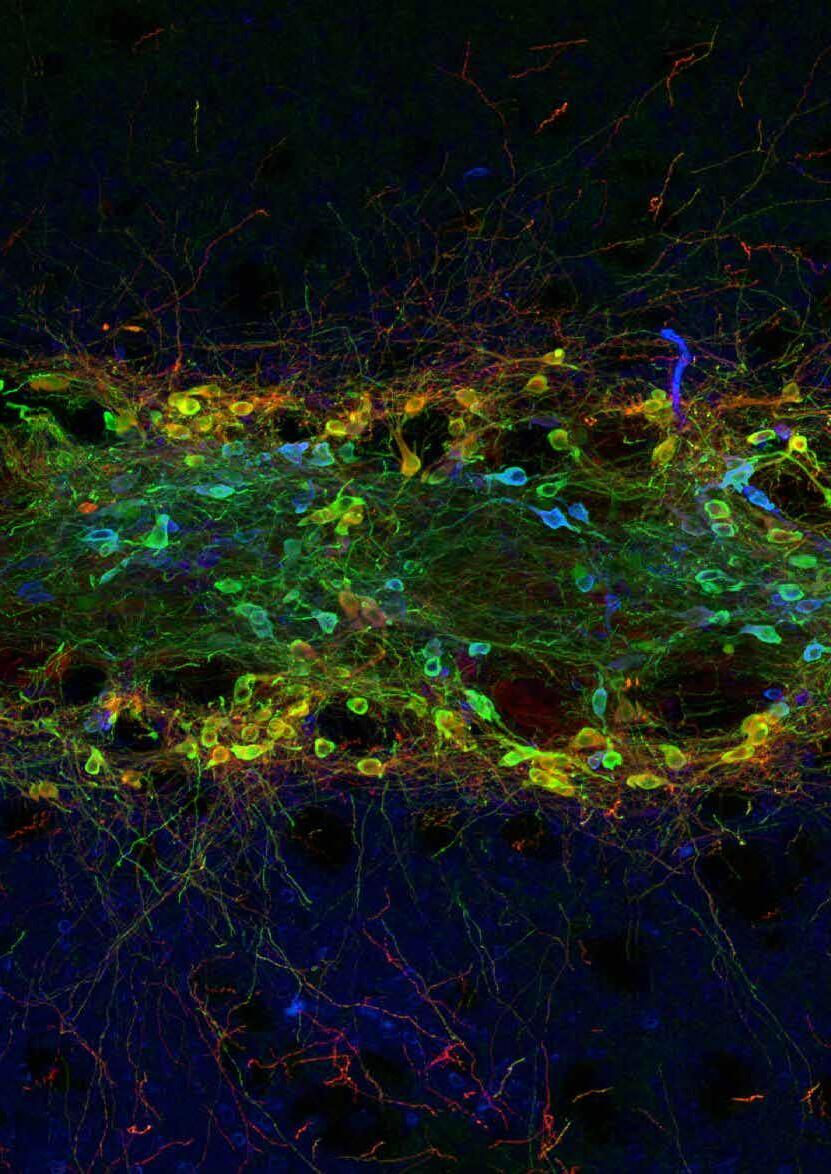
Conditions we study include:
• Addiction
• Alzheimer's disease and other dementias
• Anxiety
• Autism
• Bipolar disorder
• Cardiovascular disease
• Concussion
• COVID-19
• Depression
• Digestive diseases
• Epilepsy
• Huntington’s disease
• Motor neurone disease
• Multiple sclerosis
• Parkinson’s disease
• Schizophrenia
• Stroke
• Traumatic brain & spinal cord injury
There are many ways you can help to fund our research:
• Give today.
• Pledge over time – join our Brains Trust.
• Plan for the future – make a gift in your will.
Phone: 1800 063 693
Email: fundraising@florey.edu.au
Online: florey.edu.au
Post: The Florey, Reply Paid 83037, 30 Royal Parade, Parkville VIC 3052
Donations to the Florey Institute of Neuroscience and Mental Health of $2 or more are fully tax deductible. To request copies of our annual report, please email: fundraising@florey.edu.au
Acknowledgment of Country and Contact: The Florey Institute of Neuroscience and Mental Health acknowledges the traditional owners of this land, the people of the Wurundjeri people and the Kulin Nations. We pay our respects to their elders, past and present. Articles and photographs in this publication remain the property of the Florey and may not be reproduced without permission. For more information please contact communications@florey.edu.au